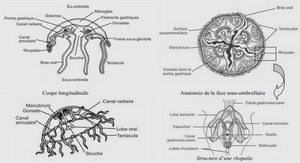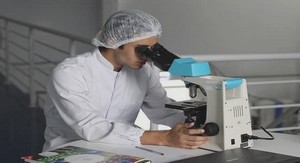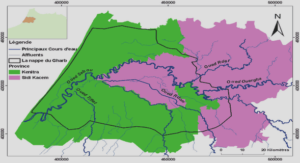Télécharger le fichier original (Mémoire de fin d’études)
Theoretical considerations of authentic materials
In recent years, teachers have certainly heard persuasive voices insisting that the English presented in classrooms should be authentic not produced for instructional purposes only. Generally, what this means is using materials which involve language naturally occurring as communication in native –speaker contexts of use, or rather those selected contexts where standard English in the norm: real newspaper reports, real magazines articles, real advertisement, real cooking recipes for example. In an article entitled Authentic materials and authenticity, Gilmore reports, “ The issue of authenticity reappeared in the 1970s as the debate between Chomsky and Hymes led to a realization that communicative competence involved much more than knowledge of language structures, and contextualized communication began to take precedence over form ”( 2007, p 12 ). This culminated in the approach which, at least in EFL circles, still holds sway today. Communicative language teaching paved the way for the reintroduction of authentic texts which were valued for the ideas they were communicating rather than the linguistic forms they illustrated. However, despite appeals for greater authenticity in language learning, movements in this direction have been slow.
Definition of authentic materials
According to Morrow et al (2000), the definitions of authentic materials are slightly different in literature. What is common in these definitions is exposure to real life language and its use in its own community. For example, Rogers (1988) defines authentic materials as appropriate and quality in terms of goals and objectives, learners’ needs and interests, and natural in terms of real life and meaningful communication. Here, Rogers shows that authentic materials are related to students’ needs in every day life and expose students to real language. Harmer (1991) defines authentic texts as materials which are designed not for language students, but for the speakers of the language. Also Richards points out, “Authentic materials, in the context of language classroom include oral and written texts that occur naturally in the target language environment and that have not been created or edited for language learners ”( 2001, p 45 ). Thus, from these definitions, we can deduce that authentic materials are not artificial teaching materials. In fact, these are materials for different purposes in real life situations. In other words, we would also define authenticity in the same way as Morrow, “A stretch of real language, produced by a real speaker or a writer for a real audience and designed to convey a real message of some sort” (1977, p 13). It is then possible to say whether a text is authentic or not by referring to the source of the discourse and the content of its production. Porter and Roberts (1989) argue by defining authenticity in this way, teachers may be able to begin identifying the surface features of authentic discourse and evaluating to what extent contrived materials or learners output resemble it.
In order to motivate students and to reach a communicative goal in language teaching and learning, the materials used by teachers like authentic materials will certainly depend on the usual factors: topic, target language, skills, students’ needs and interests.
Authentic materials and students
As already mentioned, authentic materials are closer to students’ every day life as they present real life language. Actually, the use of these materials may depend on the level of the students as well as the skills they have. According to Guarento and Morley, “The use of authentic materials is available for use in classrooms at post- intermediate level” ( 2001, p 42). They explain that this might be attributed to the fact that at this level most students master a wide range of vocabulary in the target language and structures. They also note that at a low level, the use of authentic materials may cause students to feel de-motivated and frustrated since they lack many lexical items and structures used in the target language. However, most Malagasy students in the same level in high schools often have different learning backgrounds and do not usually reach a post-intermediate level. As such, the kinds of authentic materials may affect students’ motivation. For example, using photos and pictures might be motivating and interesting for students of seconde class. As they are visual materials, they often attract students’ attention and represent what students see in their daily lives. Pictures and photos can also be used for speaking activities to increase their motivation in learning.
Besides, Matsuta (1996) suggests that using audio-visual materials aiding students’ comprehension is beneficial since it will prevent students, especially beginners, from being frustrated about authentic materials. Here, Matsuta assumes that audio-visual materials like television and video may be less frustrating that other materials like newspapers because students who may not fully understand by listening may grasp something more by viewing. It is especially because of this combination of sound and vision that video for example seems more interesting than an audio- tape. It depicts real-life situations, real -life people and real – life language. In addition, Lenny states,
The learner does not only learn to decode and understand the verbal elements of the target language, but she also learns to incorporate aural clues such as intonation and pause, paralinguistic information such as facial expression, gestures, register, social setting, and cultural behavior when exposed to video. (1990, p 08)
Nevertheless, the materials suggested by Matsuta are not always available in most Malagasy high schools especially those which are located in remote areas. However, the theory is relevant to most Malagasy high school teachers and students in Madagascar. Guarento and Morley (2001) also suggest that authentic materials should be used in accordance with students’ ability and they add that suitable tasks can be given to learners in which total understanding is not relevant. This means that Guarento and Morley claim the use of authentic materials must suit the students’ ability in classrooms. It is important then to really know what students can do before introducing these materials to them. Malagasy students’ ability may differ from one another though they are in the same level. For example, they often simply cannot understand texts and vocabulary because they may have no visual support, they also feel frustrated because books present a world which they simply do not have access to, particularly for students in isolated rural areas. So, this may imply the choice of appropriate materials or the adaptation of the materials to suit all students’ ability in low levels.
According to Jordan (1997), in the early stage, non-authentic materials can be used, but he stresses that upon students dealing with materials from their own subject area, authentic materials should be introduced. However, this concept is not really valid in Malagasy high schools since the students do not learn different subjects in English. Most of the school subjects in Malagasy high schools are in French language. Yet, authentic materials can be introduced and used when high school students learn not only English, but also when they learn others subjects in which they might be interested in. For example, a map in English can be used when they learn geography, or a picture of human body with legend in English can be used when they learn science. Using authentic materials in classrooms, even when it is not done in an authentic situation, and provided that it is appropriately exploited, is significant for students’ learning. In addition, Sanderson states, “Authentic materials keep students informed about what is happening in the world, so they have an intrinsic value”(1999, p 26). This implies that students can receive news, facts around the world and they may broaden their general knowledge through the use of the materials in classrooms. In her thesis, Using authentic materials to improve the students’ reading skills in Malagasy lycée, Ralinavalona writes, “ As authentic materials are what people use in every day life, students would become more familiar with the outside world of language if they were used in class”(2003, p 05 ). The materials can also encourage reading for pleasure because they are likely to contain topics of interests to students, especially if the students are given the chance to have a say about the topics of the kinds of materials to be used in classrooms. Students need high oral proficiency in order to interact successfully inside and outside their classrooms, and primarily to contribute to the development of the country through business, politics, and social problems. One way to guide students toward fluency is to have them interact with authentic materials in classrooms. Moreover, Richards admits, “Authentic materials introduce students to the culture that surrounds them and provide them with opportunities to see where different grammatical structures and types of discourse are used” (2004, p 26). Although Malagasy students are not surrounded by English culture, introducing these materials to them may prepare them for this culture and help them really see how grammatical structures are used in English. As such, culture and grammar pattern also are presented in the materials. Furthermore, by presenting authentic materials in classrooms, students can not only be taught to critically analyze the target culture and the beliefs behind it, but also to categorize the massive amount of media they are exposed to each day, and to make suitable choices in their own leisure: reading, listening and viewing. Indeed, Larimer ( 2001 ) presumes that classroom activities become preparation for real- life scenarios provided that these materials are introduced and often used in classes. This implies that the more the materials are used, the more students get familiar with real- life of English speakers. They try to act out and to use real language in classrooms when using the materials.
Authentic materials and teachers
When considering authentic materials, students often get informed about culture and get familiar with real language which is used in the materials. On the other hand, teachers play the roles of informants, monitors and interpreters of this culture and the language as the students are not English native speakers. EFL teachers then play important roles when they introduce and use authentic materials in classrooms. According to Jordens,
True authentic materials are not unedited and remain unsimplified in any way. This requires teachers to act as filters, releasing the language in manageable quantities, raising or lowering the filters as needed, and ensuring the comprehensibility of the materials through selection of learning objective, the task to be accomplished, and the way the materials are approached. (1996, p 32)
In other words, one of the teachers’ tasks is to make authentic materials comprehensible to students and to assume that the teaching and the learning goals have to be reached. Furthermore, teachers need to fully understand the values and interests within the materials. An expected role that teachers when using authentic materials sometimes have to fulfill is that of sympathetic, non-judgmental listener. When using the materials, teachers also have to determine if they are working on a concept that is new to many students. For example, bringing entertainment sections of local newspapers may be new and interesting to students. EFL Malagasy teachers may explain some differences between entertainment in English- speaking countries like America and entertainment in a non-English- speaking countries like Madagascar to Malagasy students such as mountain climbing or hiking which seems unfamiliar to them, especially those in remote places. New concepts mean there is no direct background experience and teachers will have to search literally in the students’ lives to build a meaningful context for the new concept. Moreover, Spellery (2002) also claims that teachers are interpreters between authentic materials and students, and will likely use a repertoire of paraphrase, synonyms, quick sketches, miming and pictures to get the message across for it is the message not the structures, that is the focus of authentic material. By presenting students these materials such as application forms or financial aid forms, teachers are connecting a language structure with vocabulary in context. This implies that Malagasy high school teachers need to consider if this context is pertinent to the real lives of their students, so teachers present materials which are likely to have connections with students’ everyday lives.
The obvious advantage of using authentic materials is that teachers present students to actual everyday language just as it appears in real life. It means that EFL Malagasy teachers are supposed to have a background or knowledge of real life of English native speakers. Nevertheless, this is a challenge for them especially teachers in public schools in distant areas of Madagascar as they may not have an opportunity to go to an English-speaking country or may not get informed about life in this country. For example, Ravelonanahary states that teachers face problems with the book, The New Cambridge English Course by Swan and Walter due to its western design and sophisticated materials which make teachers and students frustrated. This implies that adaptation of the material is needed in order to avoid panic and frustration.
Adapting authentic materials for language teaching and learning
As already mentioned, the introduction and the use of authentic materials depend mainly on the level of the students as well as the skills they have. The materials also represent culture and language structures in which students may not fully understand or they are not simply familiar with. Teachers have to adapt the materials because they may even have difficulties in using them. So, it is probable that teachers adapt authentic materials though it seems a little difficult and complicated. Murcia argues, “Adapting original materials for language teaching is an incredible process, half-art and half- science” (2000, p 25). The materials may be adapted in order to make them suit the students’ levels and reach both the teachers and the students’ goals. Moreover, Ralinavalona (2003) writes that the materials would not be authentic at all if the were adapted. She also states that they are only adapted when necessary, and the kind and the degree of adapting depend on the age and the capacity of the students. Nuttall (1998) suggests these following keys to successful adaptation of authentic materials: converting them into workshop activities, adjusting the length of the materials, simplifying or explaining key language elements and converting them into a variety of exercise types. When a material is adapted, it should allow students to interact freely in the target language. Activities can be: a form to fill out, a recording to listen to, a checklist to clarify. Gardner (1998) also claims that successful adaptation requires careful attention to the semantic, lexical, syntactic, and discourse elements of the original text. Thus, EFL teachers should adapt authentic materials for different classroom uses, depending on their students’ age and English proficiency no matter what the source of material or its purpose in class is. Also EFL teachers should select available authentic materials depending on their teaching objectives and the activities they intend to do in classrooms.
Choosing and exploiting authentic materials
Although there are different kinds of authentic materials, EFL teachers must choose and exploit the material which meets their teaching objectives. However, Malagasy EFL teachers do not have enough choices because, again, many authentic materials are not available in Madagascar, more precisely in school libraries or teacher resource centers. In spite of the shortage of the materials, Ralinavalona (2003) suggests that it would be a good idea if teachers themselves gather all types of materials that they can find. As such, Malagasy EFL teachers can collect any materials that they meet in every day life such as newspapers, leaflets, manuals. Moreover, Spellery claims, “When choosing materials the important thing to keep in mind is to consider what students are likely to come in contact with in their daily lives” (2002, p 16). Indeed, teachers often need to remember to choose materials that are appropriate and relevant to students’ needs and that they experience in their real lives. Again, this limits the resources available to Malagasy EFL teachers as they may find materials which are not adequate and suitable for students or materials which do not make them use real language.
In order to exploit authentic materials carefully, Murcia (2000) recommends that teachers should take some time to look through available materials such as newspapers and magazines with an ESL eye as they have these materials in hand or arrive at home. She also claims that they might cut some extracts from the materials or mark them. In addition, Jordens proposes, “ Teachers can also ask shopping guides and sales advertising at local supermarkets and shops, tourist brochures at travel agencies or menus at local restaurants” ( 1999, p 45 ). However, Jordens’ recommendation cannot be applied in Madagascar; instead Malagasy EFL teachers can ask for Mada English Journal, a bi- monthly newspaper available to them, except for teachers in very remote areas. They can also find manuals or instructions for using telephones, sewing machines, televisions refrigerator written in English. Again, real language and culture are reflected within authentic materials.
Authentic materials, language and culture
Authentic materials represent the actual goal of communicative competence. However, this goal is not the same for everyone. All students have some practice in meeting these real challenges including the ability to use the target language effectively and to know the culture over the real language. Also Malagasy students need to practice real- life language more in classrooms. Even at early stages, students should learn how to respond to language which they do not fully understand, but which presents real language. As Rivers states, “Authentic materials bring students in contact with language as it is the culture to meet actual communication needs” (1998, p 15). The materials make language contextual and natural, and importantly they bring the real world into classrooms and significantly enliven ESL classes. In addition, Moya (2003) assumes that EFL teaching methods that incorporate authentic materials show the usage of the target language in a modern way and can add freshness and life to the process of learning. Successful language learning requires language users to know that culture underlying language in order to understand it. Tseng (2002) suggests that culture effects change in individual perception, and is vital for expanding an individual’s perception of the world. According to Stuart and Nocon, “Learning about the lived culture of actual target language speakers as well as about one’s own culture requires tools that assist language learners in negotiating meaning and understanding the communicative and cultural texts which linguistic codes are used ” ( 1996, p 435 ). Although the actual experience of visiting an English speaking city cannot be transferred to classrooms, virtually all the sources of information students visiting a city would use can be made available in urban classroom settings. Nevertheless, students in rural areas cannot benefit from it due to the lack of materials, and most of these areas are not connected to electricity. Also, Shanahan (1997) states that cultural content provides exposure to living language that a foreign language lacks. Here, it is said that cultural content has similar role to authentic materials. It exposes students to real language, the language that people speak in every day life. For example, in some books, topics describe how people live in the western world and in newspapers which are also authentic materials, provide some good source of cultural information. It may be good for Malagasy EFL students to learn about life in other countries, alternative cultures and traditions to improve their knowledge as this is part of language learning. Moreover, Mc Kay writes, “The main reason for the use of culture is not something consisting of facts to be learnt, but a helpful tool to make learners feel the need to speak and use the target language” (2000, p 14). This shows that the use of cultural content in classrooms is expected to foster students’ motivation. Here, the role of the culture in authentic materials is just to create students’ interests towards content and thus towards language, that is highly desirable. It is an aid to motivate students rather than something to be taught. So it can be an important element in language classrooms.
Table des matières
PART ONE: GENERAL INTRODUCTION
1.1. Problem statements
1.2. Research questions
1.3. Limitations of this work
1.4. Significance of this research
1.5. Organization of this research
PART TWO: LITERATURE REVIEW
2.1. Theoretical considerations of authentic materials
2.1.1. Definitions of authentic materials
2.1.2. Authentic materials and students
2.1.3. Authentic materials and teachers
2.1.3.1. Adapting authentic materials for language teaching and learning
2.1.3.2. Choosing and exploiting authentic materials
2.1.4. Authentic materials, language and culture
2.1.5. The relationship between authentic materials, motivation and acquisition
2.2. Theoretical considerations of speaking skills
2.2.1. Definition of speaking skills
2.2.2. Reasons for teaching speaking skills
2.2.3. Components of speaking skills
2.2.3.1. Appropriateness
2.2.3.2. Fluency
2.2.3.3. Accuracy
2.2.4. Approaches for teaching speaking skills
2.2.4.1. Language input
2.2.4.2. Structured output
2.2.4.3. Communicative output
PART THREE: METHODOLOGY
3.1. School settings
3.2. Participants
3.2.1. Teachers
3.2.2. Students
3.3. Instruments
PART FOUR: ANALYSIS OF DATA
4.1. Analysis of data
4.1.1. Teaching speaking frequency
4.1.2. Techniques of teaching speaking
4.1.3. Teachers’ reasons for teaching speaking
4.1.4. Materials that teachers used when teaching speaking
4.1.5. Teachers’ opinions about the advantages and disadvantages of using authentic material
4.2. Report of experimentations
4.2.1. Authentic materials, students and teachers
4.2.2. Authentic materials and motivation
4.2.3. Authentic materials and acquisition
4.2.4. Adapting authentic materials
PART FIVE: GENERAL CONCLUSION
5.1. Analysis of findings based on research questions
5.2. Recommendations for teacher training and future research
BIBLIOGRAGHY
APPENDICES




